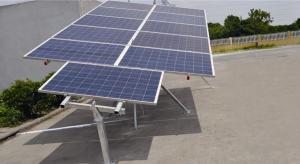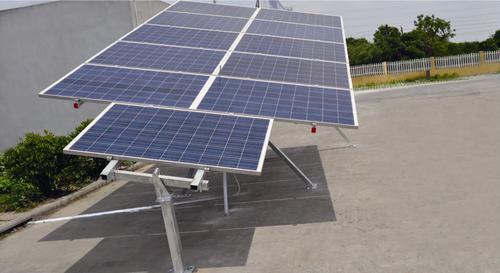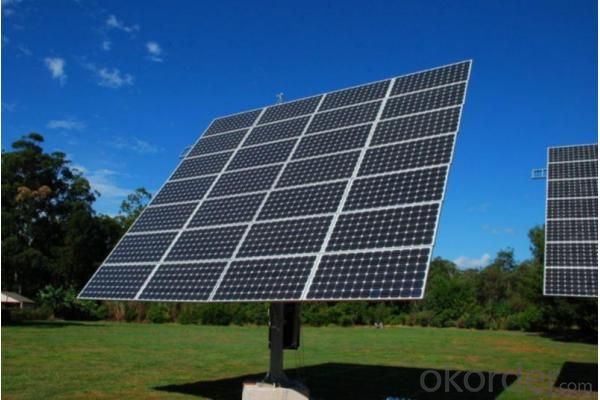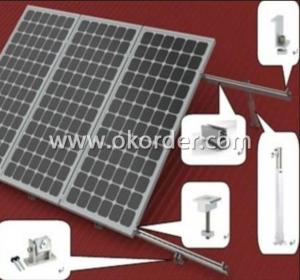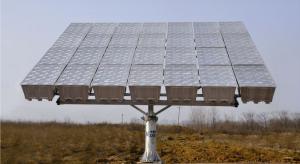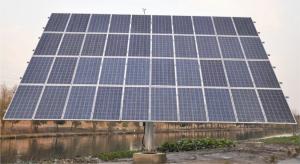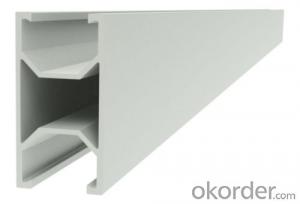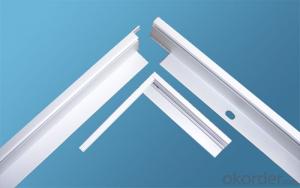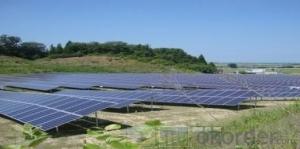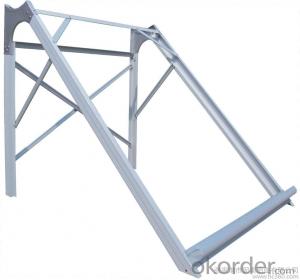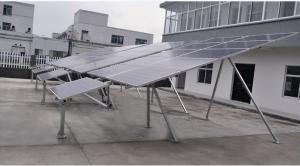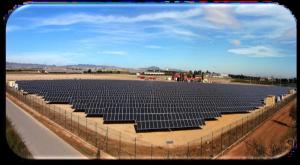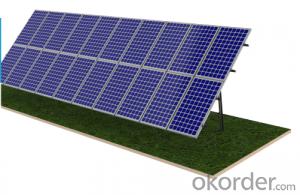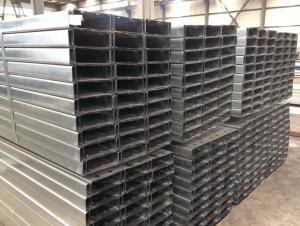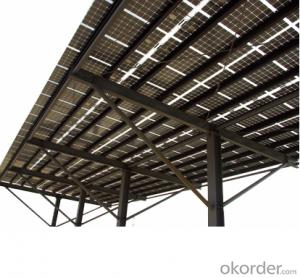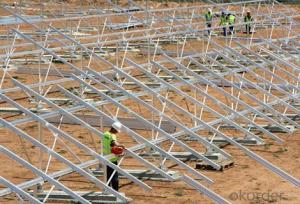Click Fit Triangle Single Set Slope Solar Mounting System
- Loading Port:
- Shanghai
- Payment Terms:
- TT OR LC
- Min Order Qty:
- 100000 watt
- Supply Capability:
- 5000000 watt/month
OKorder Service Pledge
OKorder Financial Service
You Might Also Like
Triangle Single Set Sloped Axis Tracking System
triangle single set sloped axis tracking system is adopt triangle bracket support and frame Structure,high weight and easy installation(free hoisting construction and low requirement on foundation),low power consumption and high reliability.moving parts used polymer bearings with self-lubrication and slewing drive with sealing,free of oil and maintenance free and self-protection from wind and sand.power generating can be increased by 20-35%.
Features:
1. The system, which uses an isosceles triangle bracket as bracket structure and maintenance-free, wind and sand-proof high polymer material bearing moving parts and unique linkage structure, features reliable system stability, low cost and low failure rates.
2. Compared with traditional fixed-bracket its annual energy output can be increased up to approximately 20 percent - 30 percent.
3. With exactly the same or even lower cost as fixed-bracket the system is the optimal choice for the establishment of large and medium-sized high-efficiency solar power stations.
Specificiation:
•installed capacity | • 1KW—10KW |
•control method | •Light control •time control •light/time control |
•tracking accurancy | • ≤1° |
•Azimuth angle | • ±45° |
•working wind | • 50—70km/h |
•Max wind resistance | • 125—200km/h |
•Driven power | • DC24V/≤30W |
•Structural material | • Q 2 3 5 hot-dip galvanized steel |
•level of protection | • I P 6 5 |
•Quality guarantee | • 25Y/2Y |
•Operating •ambient temperature | • -35℃—65℃ |
•Area of net rack | • 10㎡—80㎡ |
•Unit weight | • 200kg——2000kg |
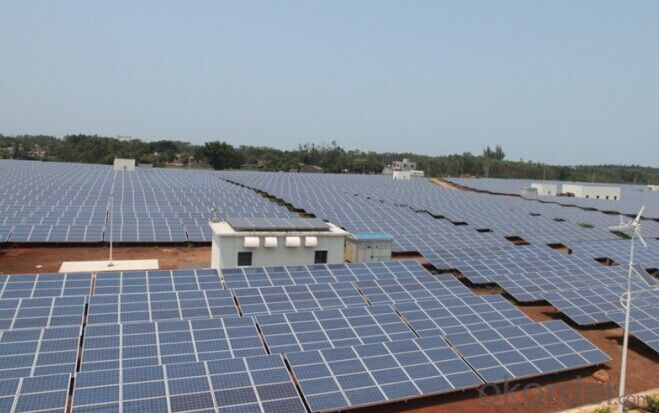
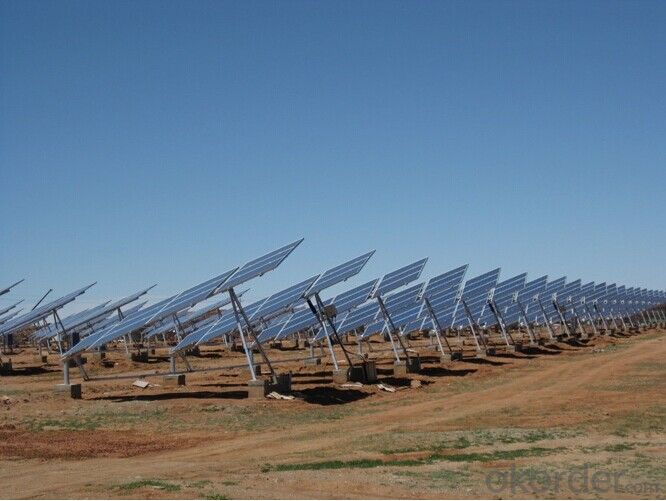
FAQ:
1. How long will my inquiry get response?
Your inquiry related to our products or prices will be replied within 24 hours.
2. Can I get professional service and suggestion?
Well-trained and experienced staffs to answer all your questions in fluent English.
3. Do you accept OEM or customized design?
OEM & ODM, any your customized lightings we can help you to design and put into product.
4. What if I need specific design?
Distributorship are offered for your unique design and some our current models.
- Q: Can a solar mounting system be installed on a rooftop with a thatched roof?
- Yes, a solar mounting system can be installed on a rooftop with a thatched roof. However, it requires careful planning and consideration to ensure the structural integrity of the thatched roof is not compromised and that the solar panels can be securely attached without damaging the thatch. It is recommended to consult with a professional solar installer who has experience with thatched roofs to ensure a safe and proper installation.
- Q: Can a solar mounting system be used in areas with solar incentives for veterans?
- Yes, a solar mounting system can be used in areas with solar incentives for veterans. In fact, the availability of solar incentives for veterans can make it even more financially beneficial to install a solar mounting system in these areas. These incentives can include tax credits, grants, or other financial incentives specifically designed to support veterans in adopting renewable energy solutions. By taking advantage of these incentives, veterans can not only save on their energy bills but also contribute to a more sustainable and environmentally friendly future.
- Q: Can a solar mounting system be installed on a theater or performing arts venue?
- Yes, a solar mounting system can be installed on a theater or performing arts venue. The installation process would involve assessing the structural integrity of the building, determining the optimal placement for the solar panels, and ensuring that the mounting system is securely attached to the roof or any available open space. This can help the venue generate clean and renewable energy while also reducing its carbon footprint.
- Q: What is the maximum weight capacity of a solar mounting system?
- The maximum weight capacity of a solar mounting system can vary depending on the specific design, materials used, and manufacturer. However, typical solar mounting systems can support weights ranging from a few hundred pounds to several thousand pounds, depending on the size and configuration of the system. It is essential to consult the manufacturer's specifications and guidelines for accurate weight capacity information before installing solar panels.
- Q: Are there any specific requirements for skylight or atrium design when using a solar mounting system?
- Yes, there are specific requirements for skylight or atrium design when using a solar mounting system. These requirements mainly relate to the structural integrity and load-bearing capacity of the skylight or atrium, as the solar mounting system adds additional weight and wind loads. Moreover, it is crucial to ensure that the skylight or atrium design allows for proper installation and maintenance of the solar panels, including access for wiring and cleaning. Additionally, considerations such as orientation, shading, and minimizing reflections may also impact the design of skylights or atriums when incorporating a solar mounting system.
- Q: How is a solar mounting system installed?
- A solar mounting system is typically installed by first preparing the area where the panels will be installed, such as clearing any obstructions and ensuring the surface is stable. Then, the mounting structure is assembled, which includes attaching the rails or brackets onto the roof or ground. Next, the solar panels are mounted onto the rails or brackets using clamps or brackets. Finally, the electrical connections are made, including connecting the panels to the inverter and the inverter to the electrical system.
- Q: Are there any specific requirements for installing a solar mounting system on a heritage site?
- Yes, there are specific requirements for installing a solar mounting system on a heritage site. These requirements typically vary based on the regulations and guidelines set by the relevant heritage conservation authorities. Some common requirements include ensuring minimal visual impact, preserving the historic integrity of the site, and using materials and installation methods that are reversible and do not cause damage to the heritage structures. It is important to consult with heritage experts and obtain necessary permissions before installing solar panels on a heritage site.
- Q: Can a solar mounting system be installed on a rooftop with a roll roof?
- Yes, a solar mounting system can be installed on a rooftop with a roll roof. However, it is important to ensure that the installation is done properly by professionals who are experienced with this type of roofing material. Additionally, the weight and the structure of the roll roof should be evaluated to determine if it can support the added weight of the solar panels and mounting system.
- Q: What is the expected efficiency of a solar mounting system?
- The expected efficiency of a solar mounting system can vary depending on factors such as the type of mounting system, the angle and orientation of the solar panels, and the location's climate and sunlight availability. Generally, a well-designed and properly installed solar mounting system can achieve an efficiency between 80% and 90%, meaning that it can capture and convert 80% to 90% of the available solar energy into electricity.
- Q: Can a solar mounting system be used in earthquake-prone areas?
- Yes, a solar mounting system can be used in earthquake-prone areas. However, it is crucial to ensure that the mounting system is designed and engineered to withstand seismic activities. Specialized mounting structures and installation techniques can be employed to enhance the system's resilience and minimize the risk of damage during earthquakes.
Send your message to us
Click Fit Triangle Single Set Slope Solar Mounting System
- Loading Port:
- Shanghai
- Payment Terms:
- TT OR LC
- Min Order Qty:
- 100000 watt
- Supply Capability:
- 5000000 watt/month
OKorder Service Pledge
OKorder Financial Service
Similar products
Hot products
Hot Searches
Related keywords
